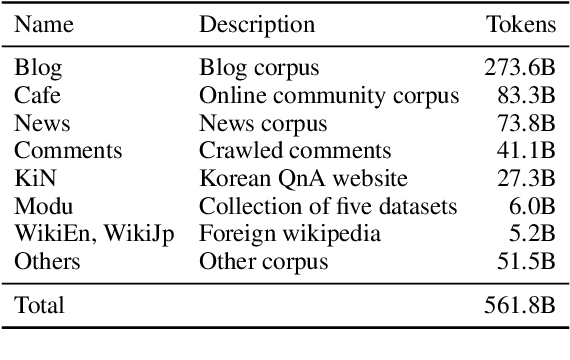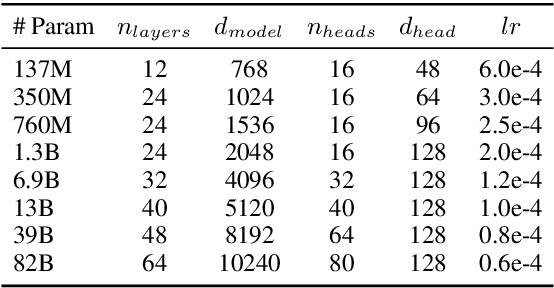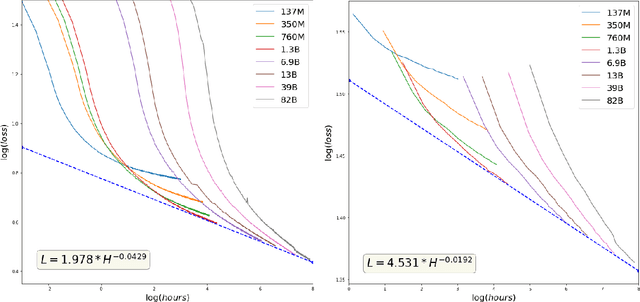HyoungSeok Kim
On the Effect of Pretraining Corpora on In-context Learning by a Large-scale Language Model
Apr 28, 2022



Abstract:Many recent studies on large-scale language models have reported successful in-context zero- and few-shot learning ability. However, the in-depth analysis of when in-context learning occurs is still lacking. For example, it is unknown how in-context learning performance changes as the training corpus varies. Here, we investigate the effects of the source and size of the pretraining corpus on in-context learning in HyperCLOVA, a Korean-centric GPT-3 model. From our in-depth investigation, we introduce the following observations: (1) in-context learning performance heavily depends on the corpus domain source, and the size of the pretraining corpus does not necessarily determine the emergence of in-context learning, (2) in-context learning ability can emerge when a language model is trained on a combination of multiple corpora, even when each corpus does not result in in-context learning on its own, (3) pretraining with a corpus related to a downstream task does not always guarantee the competitive in-context learning performance of the downstream task, especially in the few-shot setting, and (4) the relationship between language modeling (measured in perplexity) and in-context learning does not always correlate: e.g., low perplexity does not always imply high in-context few-shot learning performance.
What Changes Can Large-scale Language Models Bring? Intensive Study on HyperCLOVA: Billions-scale Korean Generative Pretrained Transformers
Sep 10, 2021



Abstract:GPT-3 shows remarkable in-context learning ability of large-scale language models (LMs) trained on hundreds of billion scale data. Here we address some remaining issues less reported by the GPT-3 paper, such as a non-English LM, the performances of different sized models, and the effect of recently introduced prompt optimization on in-context learning. To achieve this, we introduce HyperCLOVA, a Korean variant of 82B GPT-3 trained on a Korean-centric corpus of 560B tokens. Enhanced by our Korean-specific tokenization, HyperCLOVA with our training configuration shows state-of-the-art in-context zero-shot and few-shot learning performances on various downstream tasks in Korean. Also, we show the performance benefits of prompt-based learning and demonstrate how it can be integrated into the prompt engineering pipeline. Then we discuss the possibility of materializing the No Code AI paradigm by providing AI prototyping capabilities to non-experts of ML by introducing HyperCLOVA studio, an interactive prompt engineering interface. Lastly, we demonstrate the potential of our methods with three successful in-house applications.
Convergence Analysis of Optimization Algorithms
Jul 06, 2017Abstract:The regret bound of an optimization algorithms is one of the basic criteria for evaluating the performance of the given algorithm. By inspecting the differences between the regret bounds of traditional algorithms and adaptive one, we provide a guide for choosing an optimizer with respect to the given data set and the loss function. For analysis, we assume that the loss function is convex and its gradient is Lipschitz continuous.
 Add to Chrome
Add to Chrome Add to Firefox
Add to Firefox Add to Edge
Add to Edge